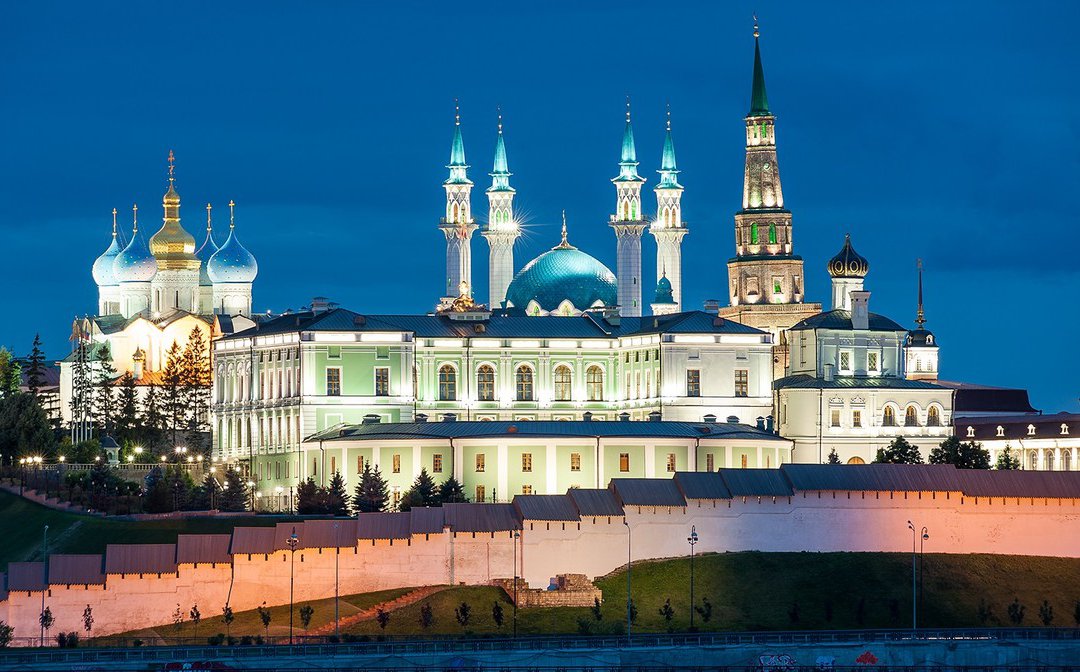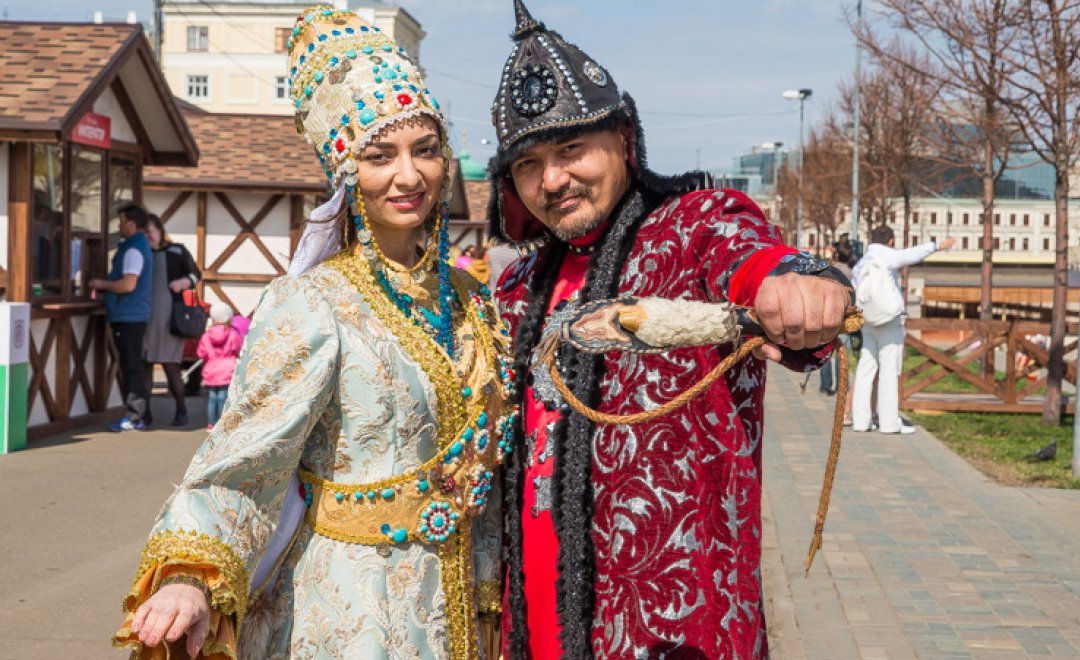 The Kazan Kremlin
The Kazan KremlinUpon arrival, your guide and driver will greet you at the train station platform and take you on a city tour of Kazan, showcasing its most prominent attractions. The highlight of the tour is the Kazan Kremlin, a UNESCO World Heritage site. Within the Kremlin, you'll visit the Kul Sharif Mosque, renowned for its grandeur and a significant collection of ancient books. The Annunciation Cathedral, another architectural marvel, is a key Orthodox site and took 9 years to complete after Kazan was conquered by Ivan the Terrible in 1552. This city is a unique blend of history, culture, and religion, making it an enriching experience for any traveler.
 Kazan
KazanExploring the old Tatar village will give you a glimpse into the historical roots of the Tatar people. You can experience traditional wooden architecture, perhaps visit old mosques, and interact with locals who are eager to share their heritage. The highlight here will be the Tatar tea, often served with local pastries like bäleş (a type of pie) or chak-chak (a sweet dessert). Tatar tea is usually a strong brew, often served with a sweet, aromatic blend of herbs or fruit.
At the traditional restaurant, a cooking class will immerse you in the rich culinary tradition of the Tatars. You’ll likely learn to make some of these dishes: echpochmak (savory pastry filled with meat), kystybyi (flatbread with a variety of fillings), or plov (rice pilaf). The cooking methods reflect a blend of Turkic, Middle Eastern, and Russian influences, which makes Tatar cuisine so unique.
Then, we proceed to the National museum.
The National Museum in Kazan is a great way to round out the day. It gives you a deeper understanding of Tatar history, culture, and art. You’ll find exhibits on Tatar folk traditions, as well as the broader historical narrative of Kazan and the Volga region.
The Tatar influence on the Russian language is quite significant, reflecting centuries of historical interaction between the two peoples. During the time of the *Khanate of Kazan* and its eventual incorporation into the Russian Empire, many Tatar words made their way into Russian vocabulary, especially in areas related to culture, everyday life, and trade. Here's a brief breakdown of some of the words you mentioned and their Tatar roots:
1. "Dengi"(money) – This comes from the Tatar word denge, which means "money" or "wealth." The Tatar language had a strong influence on financial terms during the time of the Khanate.
2. "Tulup" (traditional winter coat) – This word originates from the Tatar tulup, which refers to a sheepskin coat worn in the winter. It's a practical garment suited to the cold climates of the Volga region.
3. "Saray" (shed) – While in Turkish saray means "palace," in Russian it came to mean a more modest structure, likely due to the way the Tatars used the word for less elaborate buildings.
4. "Kirpich"(brick) – This comes from the Tatar kirpich, which means brick. The use of bricks in construction became widespread in the region through Tatar and other Turkic peoples’ building traditions.
5. "Baradan" (drum) – This is from the Tatar baraban, meaning drum. Musical influences from the Turkic-speaking peoples have contributed a number of words to the Russian lexicon.
6. "Kabluk" (heels) – This word comes from the Tatar kabluk, meaning the heel of a shoe. This reflects the influence of Tatar craftsmanship, especially in footwear.
7. "Kazna"(treasury) – From the Tatar kazna, meaning "treasury" or "treasure." The term reflects administrative and financial terms adopted during the period of the Khanate.
8. "Bazar" (market) – Bazar comes from the Tatar word for "market," which is rooted in the Persian bāzār. The concept of trade and markets in the region was heavily influenced by the presence of Tatar merchants.
9. "Tuman" (fog) – This word is derived from the Tatar tuman, meaning fog or mist. This word illustrates the linguistic exchange in everyday life.
10. "Tyurma"(prison) – This word comes from the Tatar tyurma, which means a prison or detention place, illustrating the legal and punitive systems that influenced the Russian Empire.
These words are a testament to the deep, intertwined history of the Tatar and Russian peoples and highlight how cultural exchanges shape language over time. It's fascinating to see how Tatar heritage continues to influence Russia's linguistic and cultural landscape today.
 Kazan
Kazan The Kazan Kremlin
The Kazan Kremlin Kazan
Kazan